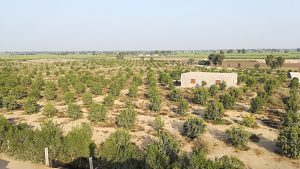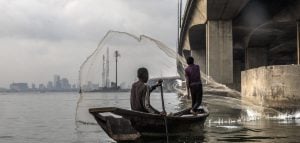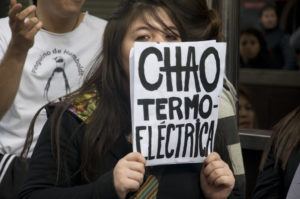The resounding victory of the Bharatiya Janata Party (BJP)-led coalition in India’s parliamentary election, with Narendra Modi back as Prime Minister of the world’s largest democracy, means policy continuity in energy, water, environment, pollution and climate change, according to most policymakers and policy advisers who spoke to thethirdpole.net as the election result became clear. Specifically:
Energy
Clean energy and clean mobility are set to get a big boost, and the government may take steps to address the short-term pains that have been caused by recent policy moves by the outgoing government. These moves have stalled the rollout of new solar and wind energy projects. There has been a big policy push for electrification of public transport, but makers of private e-vehicles see this as having happened at their cost.
Coal-fired power plants will continue to function, and there will probably be no fresh move to retire coal plants beyond those already slated for retirement. At the same time, there will be no encouragement to set up new coal-fired power plants.
A huge boost to increase availability of cooking gas is expected. Distribution of nearly 13 million free cooking gas cylinders to poor homes is seen by the BJP as one of the two welfare measures that enabled it to return to power. This scheme is stalling, due to a shortage of replacement cylinders, and the BJP knows this problem needs to be sorted out quickly.
See: Energy transition makes headway in rural India
Another scheme that is seen as a success is the one to build 18 million toilets. While the pace of construction has been impressive, the scheme is running into problems because of a lack of sewerage connections, and more importantly, a lack of water.
Water
Water is going to become a bigger problem every day – one-third of India is in the middle of a drought right now, most acute in Maharashtra. The outgoing government’s attempts to get farmers to move to drip irrigation have not worked. It is unclear if these attempts will be strengthened. It is clear that the BJP will accelerate its pet scheme to interlink India’s rivers and transfer water from the east to the west of the country. Experts have repeatedly stated, and shown, that such a scheme would be unworkable, dangerous and unsustainable, but the ruling party is set upon it.
See: Linking rivers will not save Bundelkhand
The new government will accelerate dam building in Jammu and Kashmir in the Indus basin, while sticking to the letter of the Indus Waters Treaty between India and Pakistan. This includes dams with reservoirs on the tributaries of the Ravi – one of the three eastern rivers of the Indus basin. Under the treaty, the waters of the eastern rivers are allocated to India. It also includes run-of-the-river projects on the Chenab and its tributaries, based on the argument such schemes do not hold back water. The Chenab is one of the three western rivers whose waters are allocated to Pakistan under the treaty. Pakistan has been protesting, and so have local residents who have been displaced by the schemes. But the government looks set to continue.
See: The Indus Waters Treaty: caught between a dispute and a hard place
Some hope has been expressed in Bangladesh that India may now sign the Teesta water sharing treaty because the BJP has made significant inroads into the contiguous Indian state of West Bengal, especially in the areas through which the Teesta flows. But policy observers in New Delhi think this setback is likely to make West Bengal Chief Minister Mamata Banerjee (one of the most prominent opposition leaders) even more determined to oppose the treaty. There is an added complication – before West Bengal, the Teesta flows through the Himalayan state of Sikkim, where the ruling party has been voted out after 20 years in power in April 2019. The party that will now be in power is supported by residents who were displaced by the dams and are still protesting about it. The attitude the new state government will take towards the series of dams on the Teesta in Sikkim is not known yet.
See: Where are the Teesta waters?
No one in New Delhi expects a quick change in the relationship between China and India on the Brahmaputra basin – the largest of the transboundary river basins shared by the two countries. Water policy advisers also think the relationship between India and Nepal on transboundary basins will continue in its old muddled way, while New Delhi will continue to push Kathmandu for quick completion of hydroelectricity projects slated to sell power to India.
The outgoing government failed to clean India’s holiest river Ganga – not to talk of other rivers – despite giving the matter a lot of publicity. It may try to make another big attempt, though experts fear that there are now so many dams near the headwaters of all rivers that they simply do not carry enough water in non-monsoon months to flush out pollutants. Since no one expects the government to decommission dams, all policy observers are emphasising the need to make sewage and industrial effluent treatment plants really work. While useful, this is the same approach that various governments have pursued over three decades, and the Ganga is filthier than ever.
The new government is expected to give a boost to inland water transport. While this is welcomed by almost all, there are concerns about the sustainability of dredging rivers for navigation, when most of the rivers in northern India – notably the Brahmaputra and the Ganga – carry huge sediment loads from the Himalayas, the world’s youngest mountain. There are additional concerns whether the concerns of local communities, such as fisherfolk, are being incorporated into the framework, which will have an impact on the resilience of local communities and eco-systems.
Environment
In 2014, the BJP-led government started by making it easier for entrepreneurs to start factories or mines or to build roads and dams in designated forest areas. Despite criticism from environmentalists, this policy was not only continued but strengthened almost at the end of the term of the outgoing government. Now that the BJP has won a second term, environmentalists are worried that the process of felling trees to make way for infrastructure projects will be accelerated. India is already failing to keep its Paris climate pledge when it comes to planting trees. If the current policy continues, it will fall further back. A notification to amend the process for Environment Impact Assessments released during the midst of elections seems to signal further weakening of environmental protection.
This September, there may be a lot of talk by the government on pushing back the desert, as New Delhi hosts the once-in-two-years summit of the UN Convention to Combat Desertification. What this will mean in the expanding arid and semi-arid zones of India remains to be seen.
Pollution
Air pollution is one issue that figured prominently in the election manifesto of the BJP as well as that of the main opposition Congress party. The BJP manifesto said, “We have evolved technologically better strategies and devices to map the level of pollution in cities and rivers and have taken effective steps to reduce the level of pollution in major cities, including the national capital. We will convert the National Clean Air Plan into a Mission and we will focus on 102 most polluted cities in the country. Through concerted action, we will reduce the level of pollution in each of the mission cities by at least 35% over the next five years.” The party also promised to “work towards completely eliminating crop residue burning to reduce air pollution.” Whether these promises will actually be delivered on is something one has to wait and see.
Pollution of soil and of food are rising concerns – partly as a consequence of soil pollution and partly due to indiscriminate use of chemicals including on livestock, but these have not been publicly discussed. This is becoming a major public health issue – and doctors are hoping for concerted action. But policymakers confessed that they have not really been thinking about it seriously enough.
Solid waste management – especially in cities – remains a huge and unaddressed challenge. It is unlikely that the federal government will do anything significant about it. All policymakers asked about it said this was the job of municipalities and the centre could do little more than help.
Climate change
In many ways, the impacts of climate change actually drove India’s election campaign this April and May, though it was never acknowledged in so many words. In the wake of the BJP victory, policymakers were confident that the government would accelerate moves to adapt to climate change impacts – such as rolling out climate-resilient crop varieties. Asked about mitigation of greenhouse gas emissions, they talked of India’s ambitious plan to generate 225 GW through renewable energy sources by 2022 or even 2020. As for India’s stance at global climate negotiations, the policymakers described it as a non-partisan issue and did not expect any change.
![<p>Rajasthani women face severe water challenges [image by ICRISAT]</p>](https://dialogue.earth/content/uploads/2015/11/Rajashtani-women-show-the-way.jpg)








